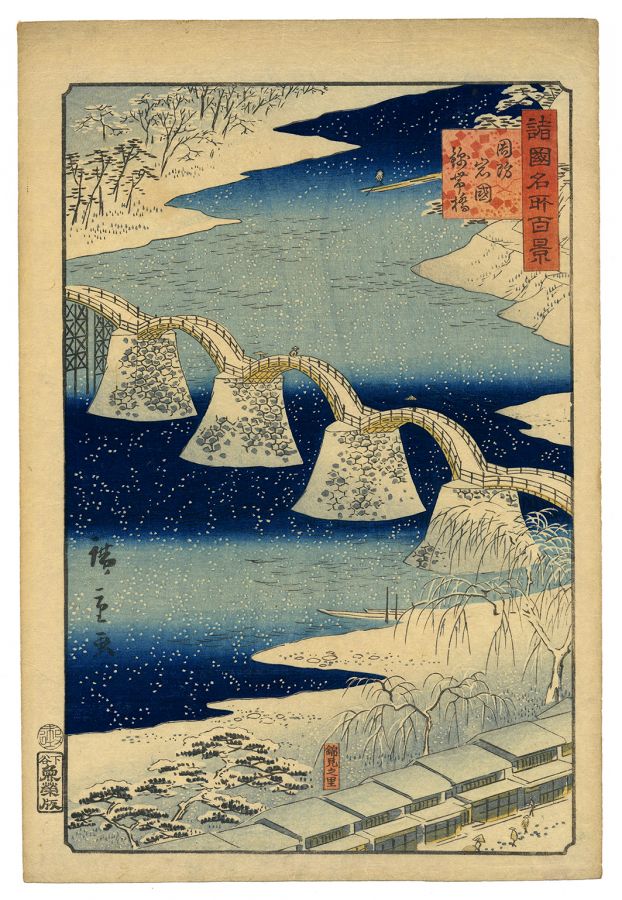From the series One Hundred Views of Famous Places in the Provinces (Shokoku meisho hyakkei). Signed Hiroshige ga, lower left; with publisher's seal Uoei of Uoya Eikichi; censor's and date seal, Goat 11 aratame (1859).
Oban tate-e, 14 3/4 x 9 15/16 inches (506 x 375 mm).
A fine, early impression, with rich, fresh colors, mica in the snow, and pronounced woodgrain, on cream Japan paper; the full sheet, in original condition, uncleaned and without repairs.
The Kintai-bashi (Bridge of the Brocade Sash) crosses the Nishikawa (Brocade River) in Iwakuni. It was built in 1673 with five arches supported by wood pilings under the arches near the shore and four massive stone pilings engineered to withstand annual flooding that had destroyed earlier bridges with wood pilings. The original survived until 1950 when it was destroyed by a typhoon—the beloved bridge was reconstructed in 1953 by Iwakuni city. The Kintai-bashi's graceful form, poetic name, and its acclaimed feat of engineering made it one of the most famous bridges of Japan's provinces.
Twenty-five years earlier, Katsushika Hokusai (1760-1849) included the bridge in his series, Unusual Views of Famous Bridges in the Provinces, depicting figures crossing the looping span during a rain shower.
Exhibited: Near and Far: Landscapes by Japanese Artists, The Clark Center for Japanese Art and Culture, Hanford, California, January 6 - April 20, 2013.
Collections: Art Institute of Chicago, Asian Art Museum, British Museum (London), Clark Art Institute, Fine Arts Museums of San Francisco, Harvard Art Museums, Museum of Fine Arts Boston, Saint Louis Art Museum, Victoria and Albert Museum (London).



